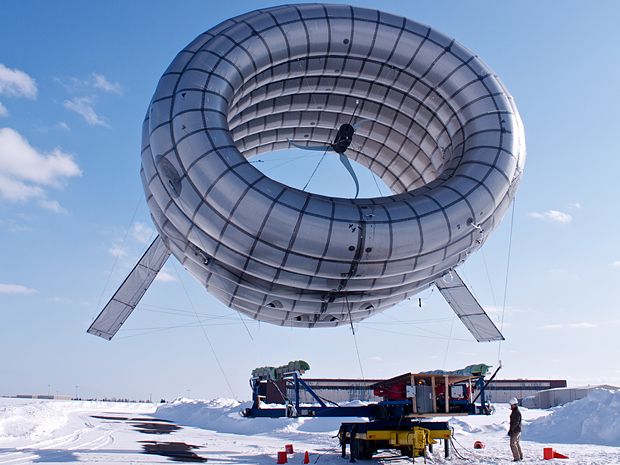- français
- English
News
World's Highest Wind Turbine Will Hover Above Alaska
 One turbine in Alaska will now spin high above the rest. Altaeros Energies will launch its high-altitude floating wind turbine south of Fairbanks to bring more affordable power to a remote community. Ben Glass, CEO of Altaeros told The New York Times that the company expects to provide power at about $0.18 per kilowatt-hour, about half the price of off-grid electricity in Alaska.
One turbine in Alaska will now spin high above the rest. Altaeros Energies will launch its high-altitude floating wind turbine south of Fairbanks to bring more affordable power to a remote community. Ben Glass, CEO of Altaeros told The New York Times that the company expects to provide power at about $0.18 per kilowatt-hour, about half the price of off-grid electricity in Alaska.
Unlike its earth-bound brethren, the airborne turbine is not intended to supply power for large electric grids. Instead, its sweet spot is serving far-flung villages, military bases, mines, or disaster zones. Various researchers have been developing floating wind turbines for years, but the 18-month project in Alaska will be the first longer-term, commercial project to test the technology, according to Altaeros.
Alpine Swifts stay airborne for six months
Swifts are said to spend most of their lives airborne, but no one has ever proved this. Now, a study suggests there's some truth to it: alpine swifts spend more than six consecutive months aloft, not even resting after migrating to north Africa following their breeding season in Europe.
 Liechti and his colleagues attached 1.5-gram data loggers to three alpine swifts (Tachymarptis melba) at a Swiss breeding site, and recaptured the birds the following year. The measurements suggest that for 200 days, all three swifts remained airborne while migrating to and wintering in Africa. The birds survive on airborne plankton, and almost certainly sleep on the wing too, Liechti says. "It has been assumed that the birds 'sleep' only for seconds, or use only one half of the brain while the other half is resting".
Liechti and his colleagues attached 1.5-gram data loggers to three alpine swifts (Tachymarptis melba) at a Swiss breeding site, and recaptured the birds the following year. The measurements suggest that for 200 days, all three swifts remained airborne while migrating to and wintering in Africa. The birds survive on airborne plankton, and almost certainly sleep on the wing too, Liechti says. "It has been assumed that the birds 'sleep' only for seconds, or use only one half of the brain while the other half is resting".
